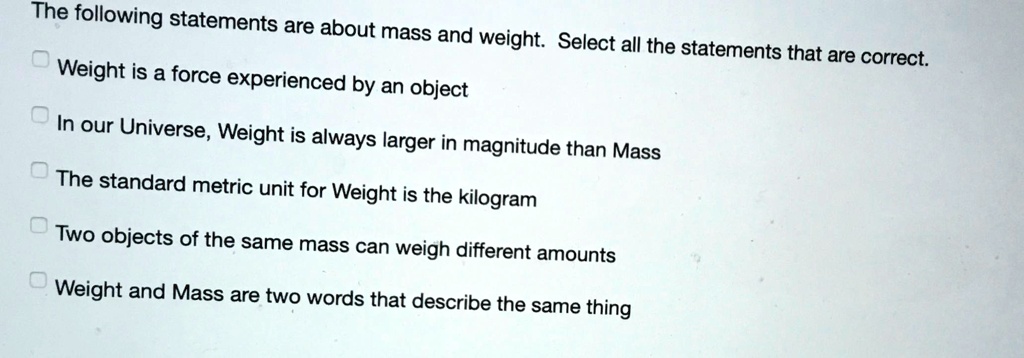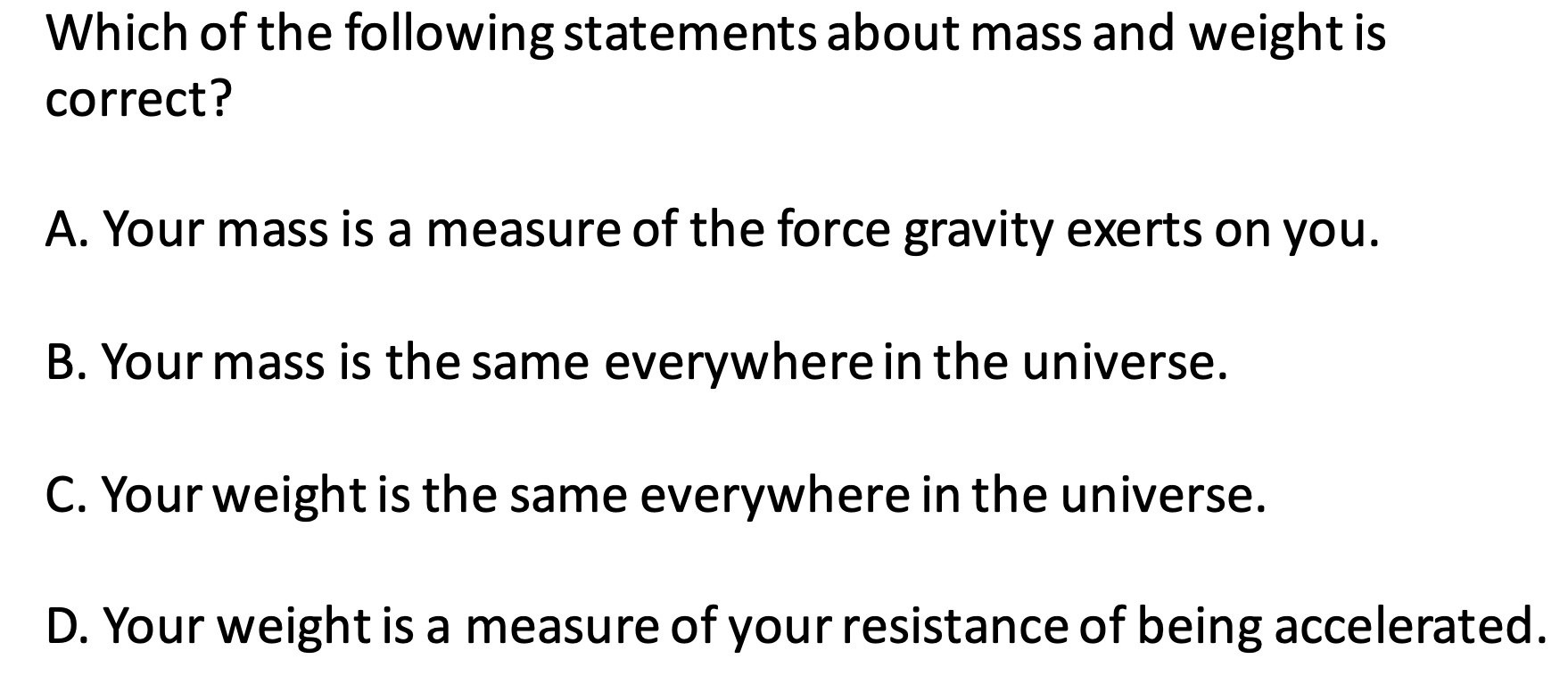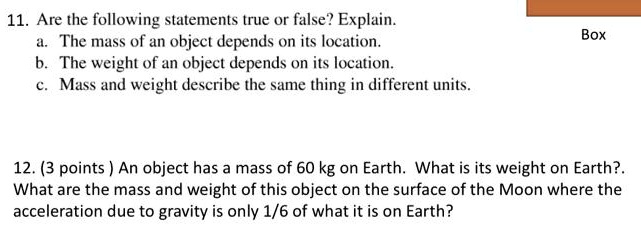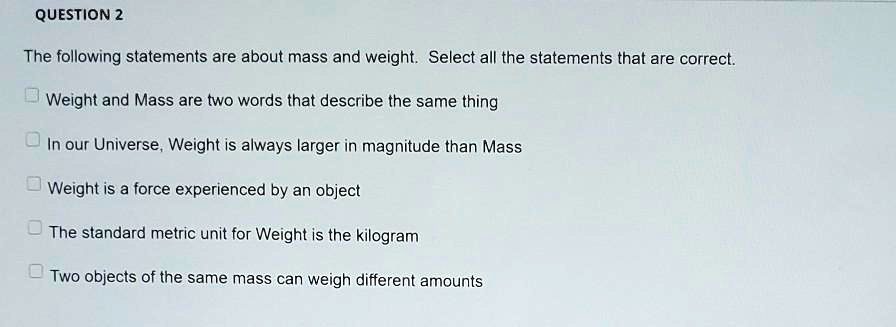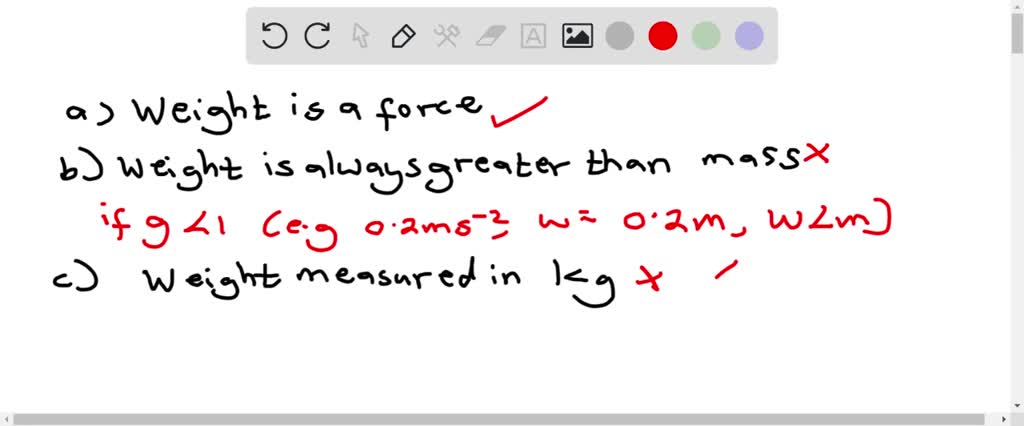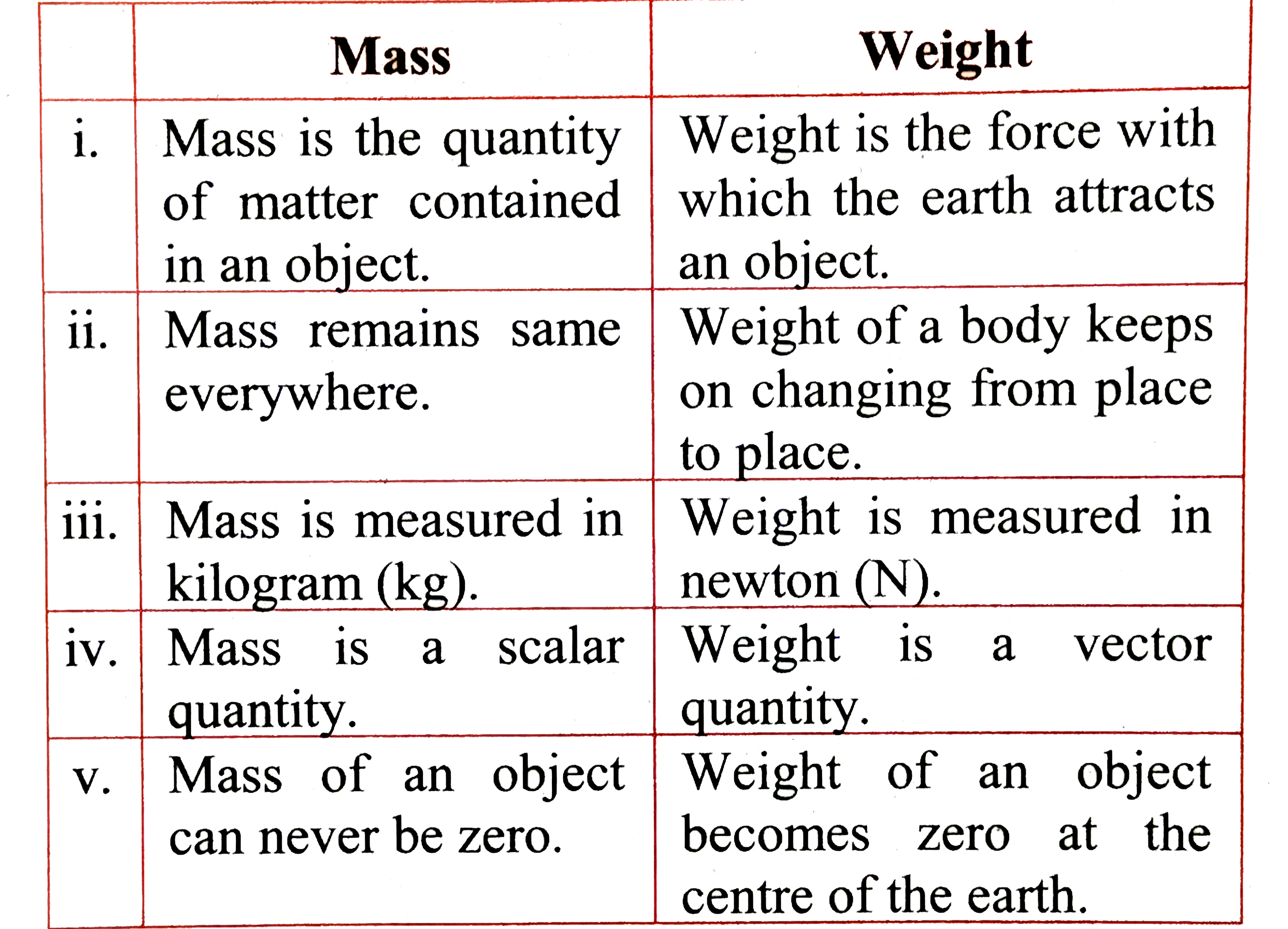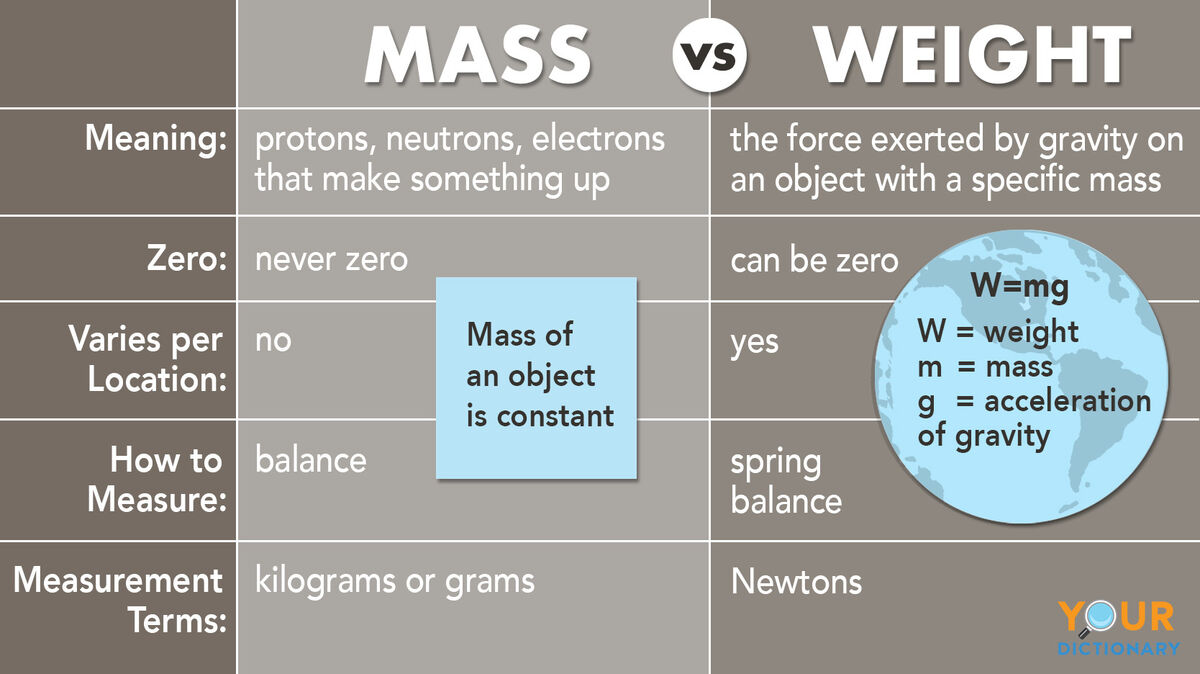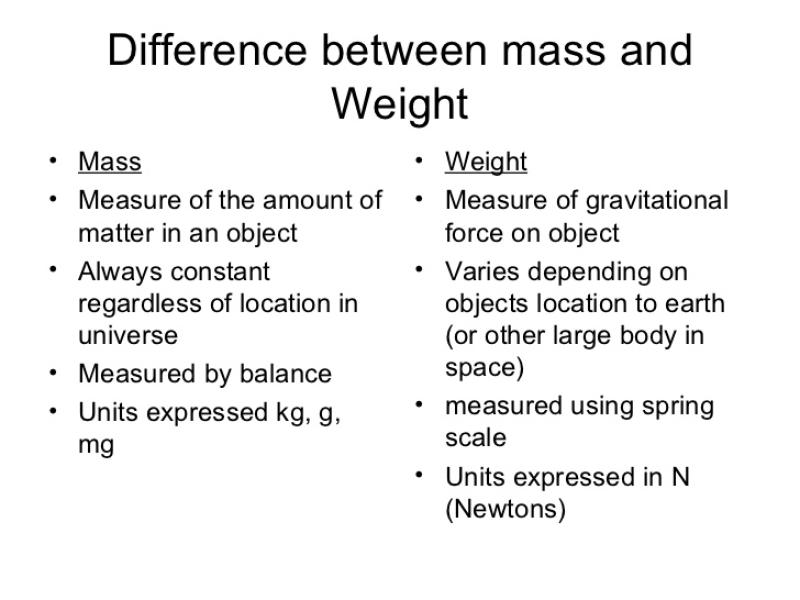Which Statement Is Accurate About Mass Or Weight

In classrooms and laboratories, aboard spaceships and within the confines of our own homes, the terms mass and weight are often used interchangeably. This linguistic shortcut, however, obscures a fundamental difference rooted in the very laws of physics. The ongoing confusion has far-reaching implications, affecting everything from accurate scientific measurements to everyday understanding of our physical world.
At the heart of the debate lies a crucial question: Which statement accurately describes mass and weight? The answer, while seemingly straightforward, delves into the nuanced relationship between an object's intrinsic properties and the forces acting upon it. This article aims to clarify the scientific distinctions, explore the practical ramifications of misunderstanding these concepts, and provide a definitive answer supported by established scientific principles.
Defining Mass and Weight
Mass, in its most fundamental sense, is a measure of an object's inertia. Inertia is the resistance an object has to changes in its state of motion. A more massive object requires a greater force to accelerate it than a less massive one.
Weight, on the other hand, is the force exerted on an object due to gravity. It's the result of the gravitational attraction between an object and a celestial body, such as the Earth. Weight is dependent on both the object's mass and the strength of the gravitational field.
The Key Difference: Force vs. Intrinsic Property
The fundamental difference hinges on the nature of the quantity being measured. Mass is an intrinsic property; it's a characteristic of the object itself and remains constant regardless of location.
Weight, conversely, is a force. It's a consequence of the gravitational interaction between the object and another object with mass. Weight will change depending on the gravitational field's strength.
Consider an astronaut on the moon. The astronaut's mass remains the same as it was on Earth. However, because the moon's gravitational pull is about 1/6th of Earth's, the astronaut's weight on the moon is significantly less.
The Equation: Weight = Mass x Gravity
The relationship between mass and weight is formally expressed by the equation: Weight = Mass x Gravity. This equation encapsulates the direct proportionality between weight and both mass and gravitational acceleration.
On Earth, the acceleration due to gravity (often denoted as 'g') is approximately 9.8 m/s². Therefore, an object with a mass of 1 kilogram experiences a weight of approximately 9.8 Newtons.
Variations in 'g' across different locations on Earth (due to factors like altitude and density variations) can lead to slight differences in weight for the same object. This highlights the fact that weight is a local measurement.
Consequences of Misunderstanding
The confusion between mass and weight extends beyond theoretical discussions. Inaccurate use of these terms can lead to errors in scientific calculations and engineering applications.
For example, consider the design of spacecraft. Engineers must accurately calculate the mass of the spacecraft to determine the required thrust for propulsion. Using weight instead of mass in these calculations would lead to significant miscalculations, potentially jeopardizing the mission.
Even in everyday life, the distinction matters. When we discuss "losing weight," we often mean reducing our mass through diet and exercise. However, a more precise way to frame it is reducing our body mass.
The Correct Statement
Based on the established scientific understanding, the accurate statement is: Mass is a measure of an object's inertia, while weight is the force exerted on an object due to gravity.
This statement captures the essence of the difference between these two fundamental quantities. It acknowledges mass as an intrinsic property and weight as a location-dependent force.
Any other statement implying that mass and weight are interchangeable or that weight is simply another term for mass is scientifically incorrect.
Perspectives on Teaching the Concepts
Educators grapple with the best ways to convey these concepts to students. Some advocate for emphasizing hands-on experiments and real-world examples.
Others suggest using analogies, such as comparing mass to the amount of "stuff" in an object and weight to the "pull" of gravity on that "stuff." However, analogies must be used cautiously to avoid reinforcing misconceptions.
The National Science Teaching Association (NSTA) emphasizes the importance of using precise language and providing students with opportunities to distinguish between mass and weight through experimentation.
Looking Ahead
As technology advances, the distinction between mass and weight becomes even more critical. Space exploration, in particular, demands precise understanding of these concepts.
Future missions to other planets and celestial bodies will require accurate measurements of mass and gravitational fields. This knowledge will be essential for navigation, resource utilization, and the establishment of future settlements.
Ultimately, a clear understanding of the difference between mass and weight is essential for both scientific advancement and everyday life. Promoting this understanding through education and clear communication is crucial for ensuring accurate measurements, sound engineering practices, and a deeper appreciation of the physical world.
